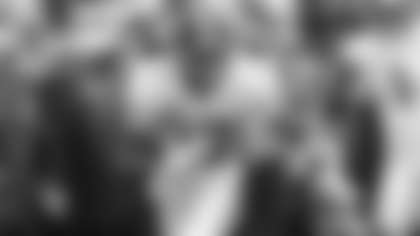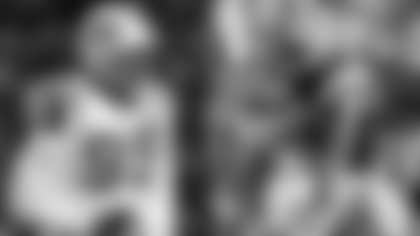They say March comes in like a lion and goes out like a lamb, and that metaphor couldn't be truer for the NFL. The month began with a flurry of activity on the free agent market that has already seen 59 players on our Top 100 Free Agents list sign. Of the 41 who remain, only 14 are unrestricted free agents, meaning the remainder have either received the franchise tag or are restricted free agents and have some sort of compensation attached to them. The increase in trading among the NFL's teams added to an already tumultuous few weeks and resulted in some of the league's bigger names, including RB Willis McGahee, changing teams, and as a result, altering the landscape of the league.
But as we head toward the final week of March, the winds have abated and things seem to have settled down a bit as teams begin to turn more and more of their attention towards April's draft. So we will do the same. In our next four installments we will take an in-depth look at each team and their needs heading into next month's selection meeting.
The Buffalo Bills have taken on a significant transformation in the last three weeks, most of it expected. But the biggest news out of Orchard Park was the trading of McGahee. Despite his obvious talent, the Bills did not want to re-sign the disgruntled runner who was coming off a career-low 990 yards and six TDs in 2006. The trade yielded three draft picks (a third and a seventh this year and a third next year) for a Bills team that is rebuilding under second-year coach Dick Jauron and general manager Marv Levy, who now have four selections in the first three rounds this April.
The team reacted by re-signing backup Anthony Thomas, who hasn't been a full-time starter since 2003, when he put together his second 1,000-yard season for the Chicago Bears. But in three starts as an injury replacement for McGahee last season, he rushed for 260 yards and a touchdown and showed that he can also be a viable receiver out of the backfield with eight of his 22 catches coming in those three games. Thomas is a big back and a straight-line power runner who doesn't have the speed to take the run outside and doesn't have the elusiveness or breakaway ability in the open field that the Bills would like. However, he is a veteran with experience and the ability to carry the load in the short term, and someone who can hold the fort while the back that the Bills are sure to select the first day of this year's draft develops into an NFL starter.
The top back in the draft is Oklahoma's Adrian Peterson, but it doesn't seem likely that he will drop to the Bills spot at No. 12 in the first round, even though some prognosticators see his draft stock falling significantly. Cal's Marshawn Lynch is the next back who could fit the Bills' plans if they decide to use a first-round pick on that position. He has excellent speed to the corner and is a physical runner in the open field who can and will run over defensive backs. He doesn't have a lot of experience as a blocker, and he hasn't shown much as a receiver, but those are skills that he can learn while sharing time with Thomas, who excels at both.
Other options later on Day One are Arizona's Chris Henry, a big back with surprising speed; Antonio Pittman of Ohio State, who, like Lynch, is more of an outside runner, though he has the toughness to gain yards between the tackles, and Auburn's Kenny Irons, who could be available in the third round but has durability issues that the Bills may shy away from after dealing with McGahee's injuries.
The team spent most of the month bolstering its offensive line with the signing of guards Derrick Dockery (Washington) and Jason Whittle (Minnesota), and offensive tackle Langston Walker (Oakland). Dockery will step in as a starter at LG and signals a move to a smashmouth style of running. Whittle has the versatility to play either guard spot, and Walker, though listed as a potential starter at RT, could become a valuable swing man who can play tackle or guard if the young Terrence Pennington is able to develop as a starter at OT.
The Bills could also look to bolster their receiving corps, which needs an able complement to Lee Evans, in the mid-to-later rounds. And with 2007 possibly being QB J.P.Losman's final year in Buffalo, don't be surprised to see a QB on Day Two. But the Bills, after spending their first five draft picks on defense last year, will likely go defense again this year, especially in the early rounds.
The team lost franchise CB Nate Clements and starting MLB London Fletcher-Baker to free agency, so look for those positions to be addressed on Day One. The re-signing of CB Kiwaukee Thomas, a free agent addition last season, gives the secondary a solid veteran, and 2006 third-round CB Ashton Youboty was selected with Clements' departure in mind. But there are several options for the Bills in Rounds 1 and 2 if they aren't sold on Youboty, who missed a significant part of the season last year due to off-the-field issues and has not developed as quickly as the team would have liked.
Michigan's Leon Hall, a big, physical defender who excels in bump-and-run man coverage, could be available at pick No. 12, as could Cal's Daymeion Hughes, who could excel in the Bills' Cover-2 scheme. Should Arkansas' Chris Houston drop to the top of Round 2, where the Bills have the 43rd overall pick, he has outstanding speed and the ball skills to be a game changer.
That may be the better option because Buffalo will have a tough time passing on Mississippi MLB Patrick Willis, considered by far the best inside linebacker in this draft. Willis is loaded with intangibles, is tough, competitive and smart, and as a result is always in position to make plays. He'd be an ideal player, either inside or on the strong side for the Jets, but he will never fall that far (No. 25). His intelligence will allow him to play either position for the Bills as well.
OLB Angelo Crowell moved to the middle the past two seasons as an injury replacement for Fletcher-Baker and could fill that spot permanently. Rumors still abound that OLB Takeo Spikes could be traded or released, and if both of those things take place, the Bills may be forced to consider more of an OLB. In that scenario they could take the corner in Round 1 and select Penn State's Paul Posluszny or Miami's Jon Beason if either slips to the top of the second round.
However, the Bills' greatest difficulty on the defensive side of the ball last season was in stopping the run — they allowed more than 140 yards per game and 4.7 yards per rush. DT Larry Tripplett was a solid free agent pickup last off-season, and youngsters Kyle Williams and John McCargo will be solid players as they develop. But all are smaller, athletic type linemen and struggle to anchor at the point of attack, particularly against bigger blockers. The Bills need a stout defender who can occupy multiple blockers and give the LBs a chance to run to the ball but also has the strength and athletic ability to collapse the pocket from the interior and make plays in the backfield.
Michigan's Alan Branch is the ideal player for the Bills and just about any other defense, with great size and bulk at 331 pounds and outstanding athleticism for a man that size. But he is not likely to fall to No. 12. Louisville's Amobi Okoye could, but he is undersized like the current corps of DTs in Buffalo. The next prospect who fits the bill (no pun intended) is N.C. State's DeMarcus Tyler. A 300-pounder with excellent quickness, he has the size to anchor against runs directly at him and the athletic ability to make plays on the run and shoot gaps in Buffalo's attacking 4-3 scheme that they implemented last season.
As you can see, the Bills have plenty of options, but expect defense to be the calling card on Day One. If the team can fill another need through free agency and add an impact QB and/or WR on Day Two, they will have gone a long way toward improving from the 2006 season.
Friday: Miami Dolphins














